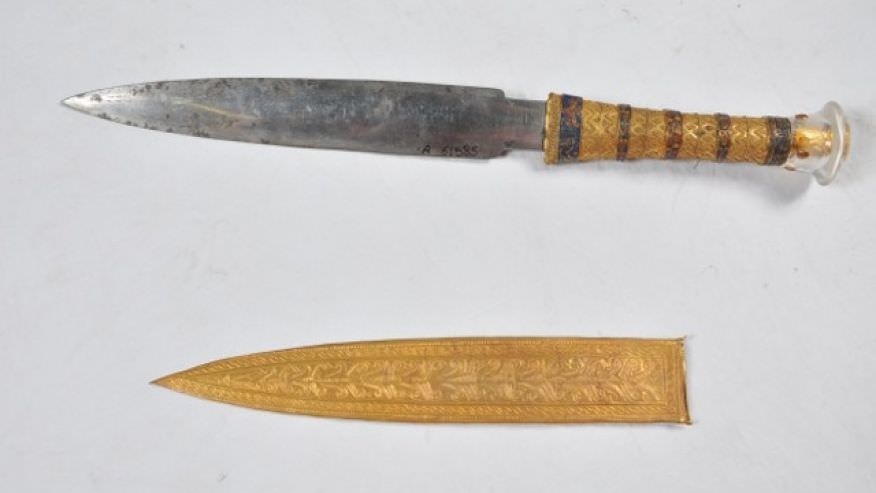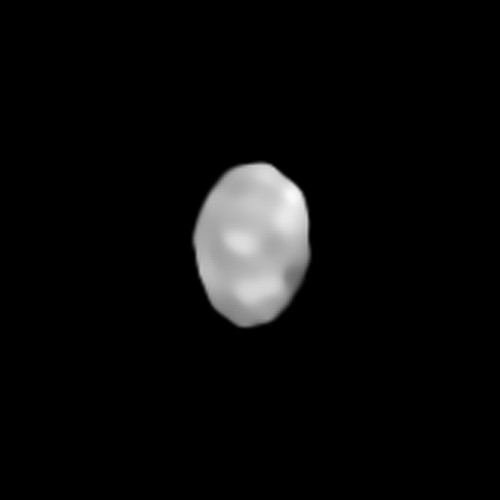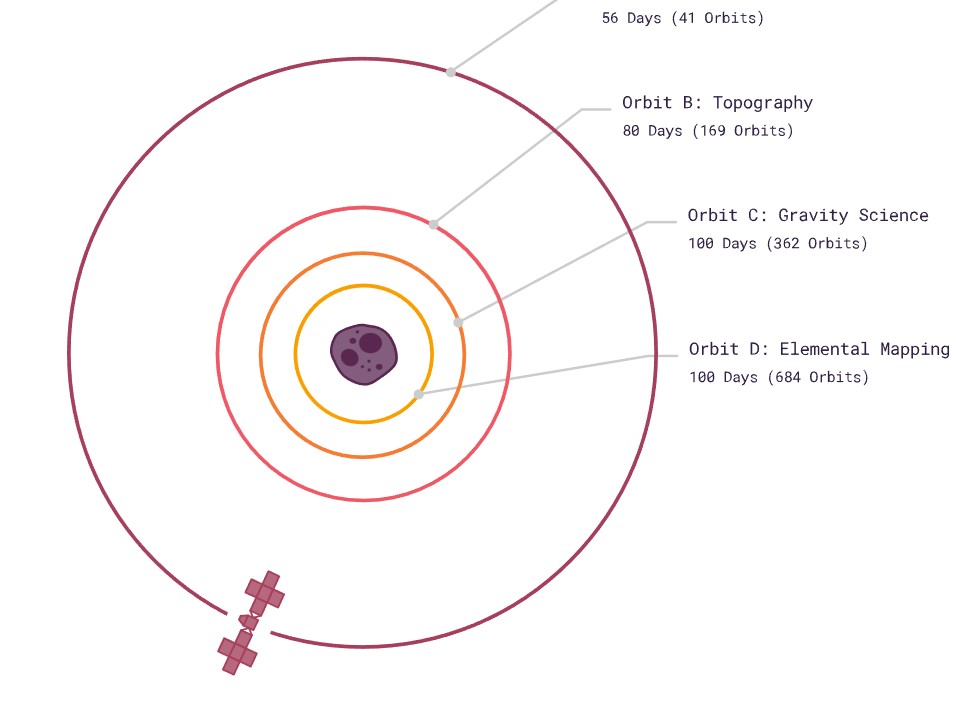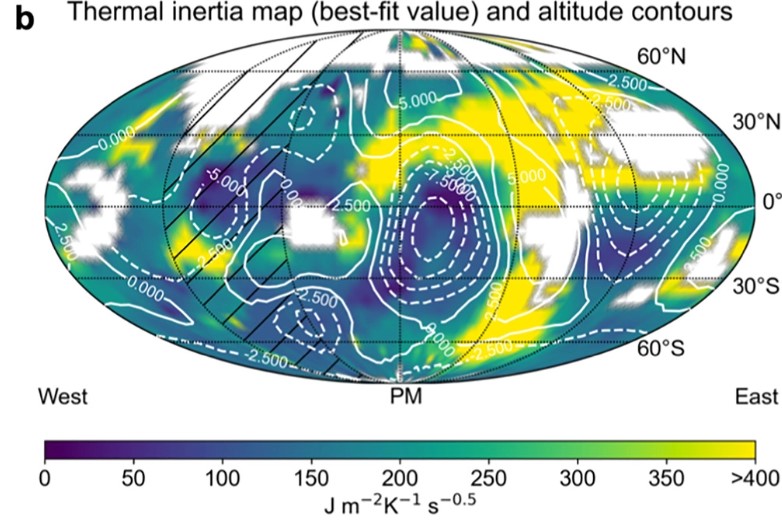This is What the Metal Asteroid Psyche Might Look Like
By Evan Gough
If you wanted to do a forensic study of the Solar System, you might head for the main asteroid belt between Mars and Jupiter. That’s where you can find ancient rocks from the Solar System’s early days. Out there in the cold vacuum of space, far from the Sun, asteroids are largely untouched by space weathering. Space scientists sometimes refer to asteroids—and their meteorite fragments that fall to Earth—as time capsules because of the evidence they hold.
The asteroid Psyche is especially interesting, and NASA is sending a mission to investigate the unusual chunk of rock. In advance of that mission, a team of researchers combined observations of Psyche from an array of telescopes and constructed a map of the asteroid’s surface.
Astronomers divide asteroids into three categories. Carbonaceous or C-type asteroids are the most common type. They make up about 75% of known asteroids and contain large amounts of carbon. The carbon makes them dark, and they have low albedoes. Silicaceous or S-type asteroids are the second most common type. They make up about 17% of known asteroids and are mostly made of iron and magnesium silicates.
Metal or M-type asteroids are the rarest types of asteroids and make up about 8% of known asteroids. They appear to contain more metal than the other asteroid types, and scientists think they’re the source of iron meteorites that fall to Earth. M-type meteorites were one of the earliest sources of iron in human history.

Psyche (16 Psyche) is an M-type asteroid. It’s also called a dwarf planet because it’s about 220 kilometres (140 mi) in diameter. It’s referred to as 16 Psyche because it was the 16th minor planet discovered. (Larger asteroids like Psyche are also known as minor planets.) Psyche is sometimes called the ‘Gold-mine asteroid’ because of the wealth of iron and nickel it contains. Though to be clear, nobody thinks it’s rich in gold.
Visible light images of Psyche don’t tell us much. The European Southern Observatory’s VLT captured some pictures of the asteroid, but they didn’t reveal any detail.

Psyche’s history is a history of uncertainty. For a long time, astronomers thought it was the exposed iron core of a much larger body. In this hypothesis, a powerful collision or series of collisions stripped away the body’s crust and mantle. The larger body would’ve been fully differentiated and measured something like 500 km (310 miles) in diameter. With the crust and mantle gone, only the iron-rich core remained.
That idea fell out of favour as time passed and astronomers continued observing it. Evidence showed that it wasn’t dense enough to be solid iron and is likely porous.
Other researchers suggested that Psyche was disrupted somehow and then re-accreted as a mix of metals and silicates. One study indicated that Psyche isn’t as metal-rich as thought and is more of a rubble pile. In that scenario, collisions with more common C-type asteroids deposited a layer of carbon and other materials onto Psyche’s surface.
The most exotic idea behind Psyche’s origins is the Ferro-volcanic idea. A 2019 study presented evidence that Psyche was once a molten blob. In that scenario, the outer layers cooled and formed stress cracks, and the buoyant molten core erupted as iron volcanoes.

The only way to find out for sure what Psyche is is to go and look at it. So that’s what NASA is doing.
The mission is called Psyche and is scheduled for launch sometime in Fall 2022. The spacecraft will rely on solar-electric propulsion and a gravity-assist maneuver with Mars to arrive at Psyche in 2026. It’ll spend 21 months studying the asteroid and will follow four separate orbital paths, each successive one closer than the previous. As it moves closer to the asteroid, it’ll focus on different scientific objectives.

A team of researchers constructed a new map of Psyche’s surface to help prepare for the mission. The map is in a paper published in the Journal of Geophysical Research: Planets. The title is “The Heterogeneous Surface of Asteroid (16) Psyche,” and the lead author is Saverio Cambioni from MIT’s Department of Earth, Atmospheric and Planetary Sciences (EAPS).
“Psyche’s surface is very heterogeneous,” Cambioni said in a press release. “It’s an evolved surface, and these maps confirm that metal-rich asteroids are interesting enigmatic worlds. It’s another reason to look forward to the Psyche mission going to the asteroid.”
In this study, the authors used the Atacama Large Millimeter/submillimeter Array (ALMA) to better look at 16 Psyche. ALMA is a radio telescope composed of 66 high-precision antennae. The separate antennae operate together as an interferometer with a high resolution. ALMA operates at wavelengths sensitive to the temperature and some electric properties of materials on Psyche’s surface.
“The signals of the ALMA antennas can be combined into a synthetic signal that’s equivalent to a telescope with a diameter of 16 kilometres (10 miles),” said co-author Katherine de Kleer, an assistant professor of planetary science and astronomy at Caltech. “The larger the telescope, the higher the resolution.”
The new map is based on two types of measurements. One is thermal inertia, which is how long a material takes to reach the temperature of its environment. Higher thermal inertia means it takes longer.
The second is the dielectric constant. The dielectric constant describes how well a material conducts heat, electricity, or sound. A material with a low dielectric constant conducts poorly and is a good insulator and vice versa.
The researchers took the ALMA observations of thermal inertia and dielectric constant and ran hundreds of simulations to see which combinations of materials could explain them. “We ran these simulations area by area so we could catch differences in surface properties,” Cambioni says.
Pure iron has an infinite dielectric constant. By measuring the dielectric constant on Psyche, the researchers could map the surface and locate regions richer in iron. Iron also has high thermal inertia because it’s so dense. So combining thermal inertia and dielectric constant measurements gives a good idea of which surface regions on Psyche are rich in iron and other metals.

The researchers call a curious feature on Psyche the Bravo-Golf region. That region has a systematically lower thermal inertia than the highland regions. The Bravo-Golf region is the depression just to the right of the asteroid’s prime meridian in the image below.

Why does a low-elevation area have lower thermal inertia? Other studies show that the region is also radar-bright. Why is that? The researchers came up with three possibilities.
The lowlands could be metal-rich but covered with fine, porous regolith that lowers their thermal inertia compared to the highlands covered in coarser regolith. Thermal inertial increases with particle size. In this scenario, finer-grained regolith would’ve pooled in the lowlands.
“Ponds of fine-grained materials have been seen on small asteroids, whose gravity is low enough for impacts to shake the surface and cause finer materials to pool,” Cambioni said. “But Psyche is a large body, so if fine-grained materials accumulated on the bottom of the depression, this is interesting and somewhat mysterious.”
The second hypothesis is that the surface material covering the lowlands is more porous than the highlands. Thermal inertia decreases as rock porosity increases. Impact fractures could make the lowlands more porous too.
The third hypothesis is that the lowlands have more silicate-rich materials than the highlands, giving them a lower dielectric constant than some areas of the highlands. The idea is that the Bravo-Golf depression could’ve been formed by an impact with a silicate-rich impactor and left silicate-rich residue behind.

Overall, the study shows that 16 Psyche’s surface is covered in a large variety of materials. It also adds to other evidence showing that the asteroid is metal-rich, though the abundance of metals and silicates varies significantly in different regions. It also suggests that the asteroid might be a remnant core of a differentiated body that lost its mantle and crust long ago. “In conclusion, we provide evidence that Psyche is a metal-rich asteroid whose surface is heterogeneous, shows both metal and silicate materials, and appears evolved by impacts,” the authors conclude.
Simone Marchi is a staff scientist at the Southwest Research Institute and a co-investigator on NASA’s Psyche mission. Marchi wasn’t involved in this study but commented on its significance in a press release. “These data show that Psyche’s surface is heterogeneous, with possible remarkable variations in composition. One of the primary goals of the Psyche mission is to study the composition of the asteroid surface using its gamma rays and neutron spectrometer, and a colour imager. So, the possible presence of compositional heterogeneities is something that the Psyche Science Team is eager to study more.”
It’ll be up to NASA’s Psyche mission to confirm these findings more rigorously.
But sending a spacecraft all the way to Psyche to understand it in more detail is about more than just Psyche itself.
If Psyche is the remnant core of a rocky, differentiated planetesimal, it’ll reveal something about our planet and how differentiated bodies form. Will it contain some of the same light elements that we expect are in Earth’s core? Earth’s core isn’t dense enough to be pure iron and nickel. Scientists think it contains lighter elements like sulphur, silicon, oxygen, carbon and hydrogen.
The Psyche mission will also determine whether the asteroid formed under conditions more oxidizing or more reducing than Earth’s core. That will tell us more about the solar nebula and the protoplanetary disk.
People sometimes refer to Psyche as the Gold Mine Asteroid because it’s so metal-rich. An object its size would contain an enormous amount of iron, though that value is unlikely to be realized or accessible any time soon.
But if knowledge is as valuable as iron, then 16 Psyche might still be a gold mine.
More:
- Press Release: New maps of asteroid Psyche reveal an ancient world of metal and rock
- Paper: The Heterogeneous Surface of Asteroid (16) Psyche
- Universe Today: Who Wants to Be a Trillionaire? Mission to Psyche Could Uncover Tons of Precious Metals!
The post This is What the Metal Asteroid Psyche Might Look Like appeared first on Universe Today.

June 18, 2022 at 12:07AM
via Universe Today read more...

Post a Comment